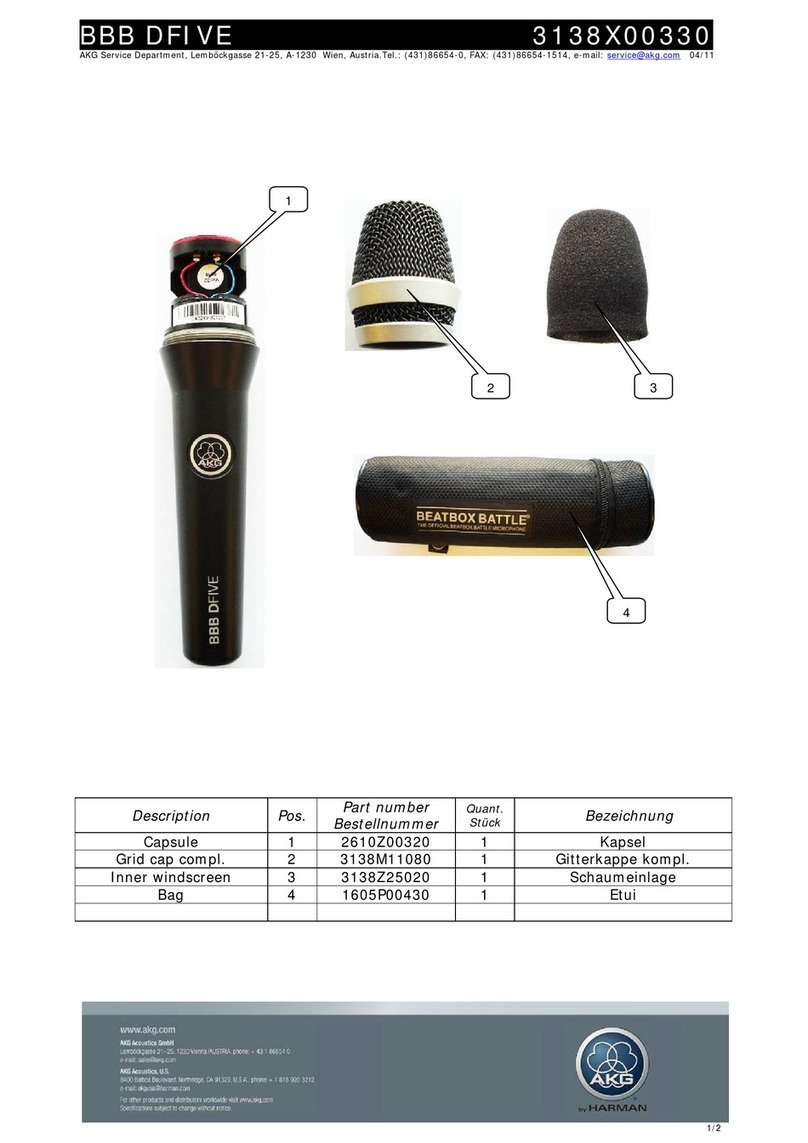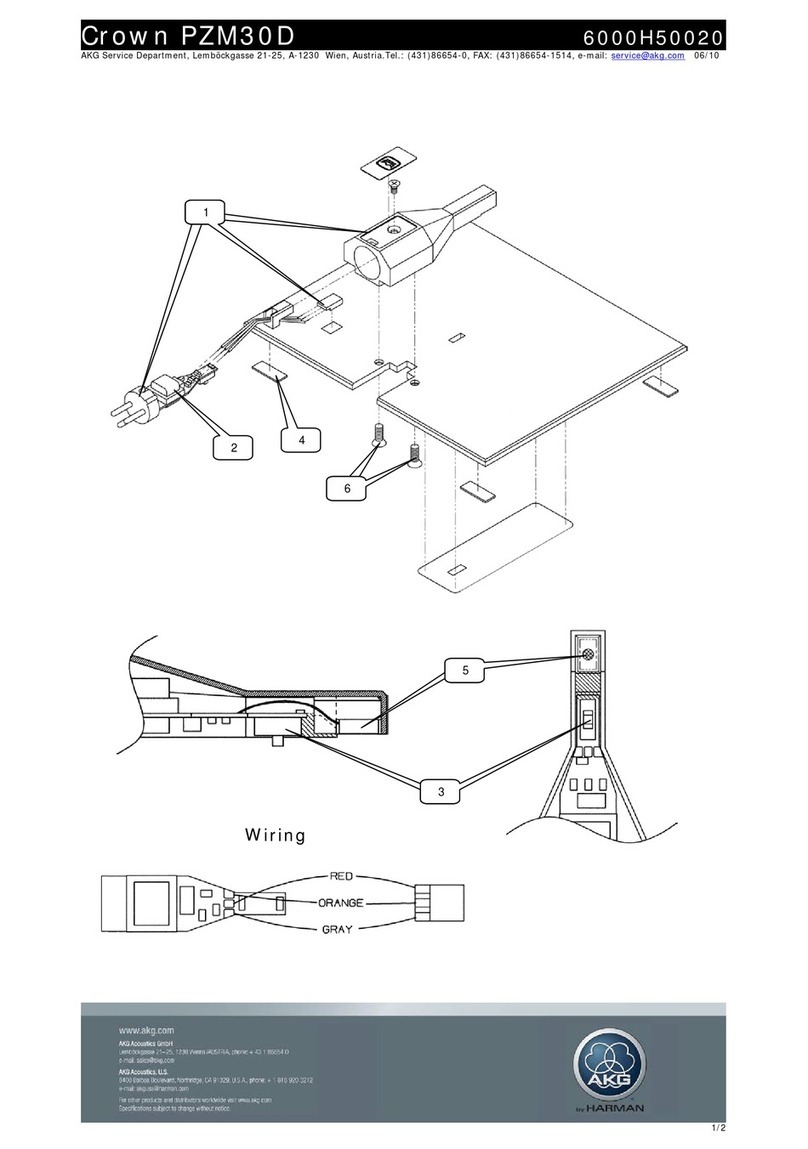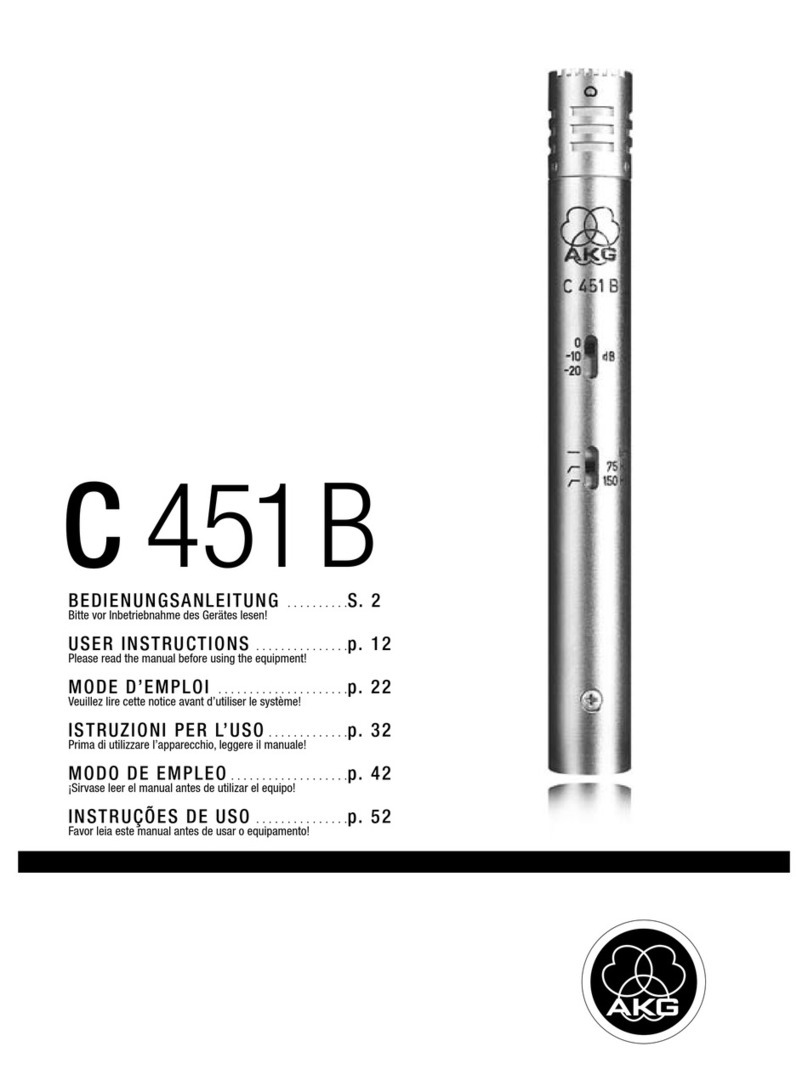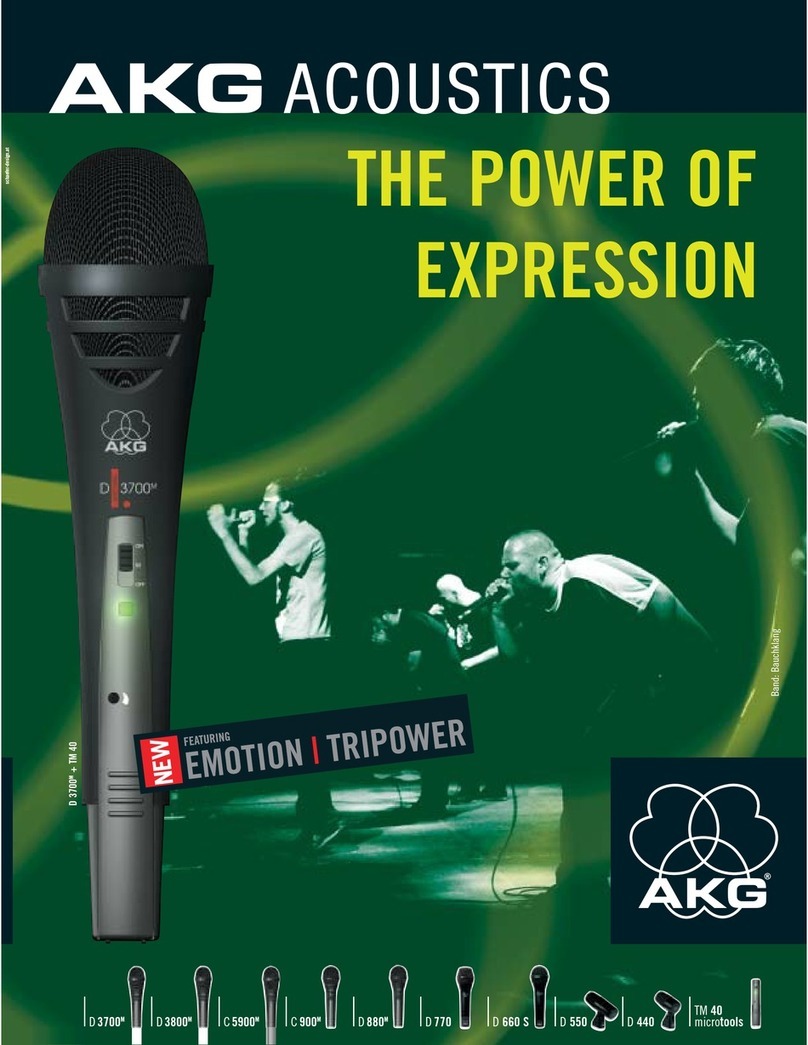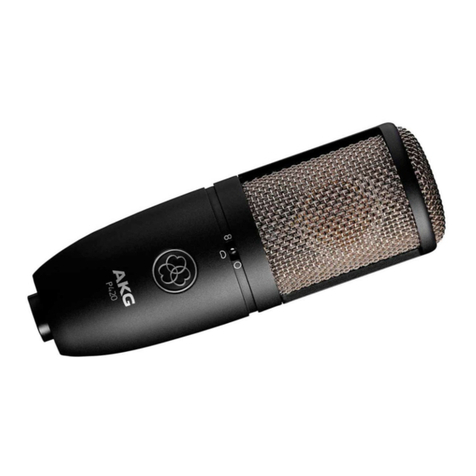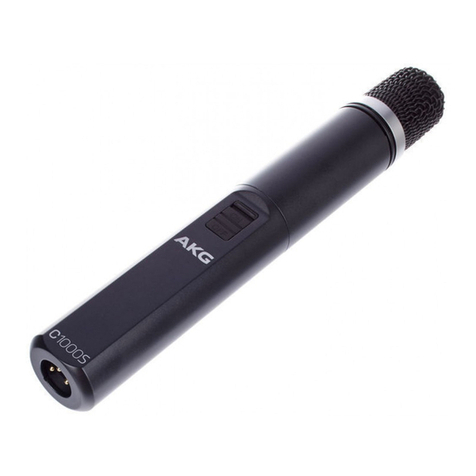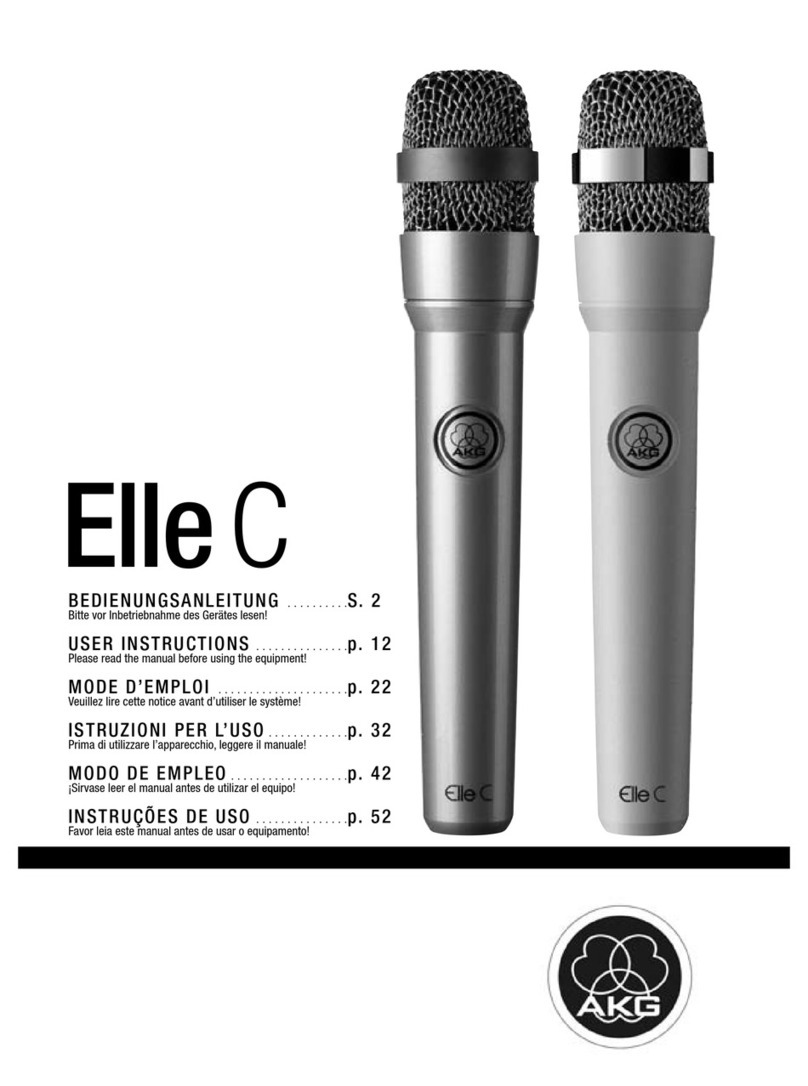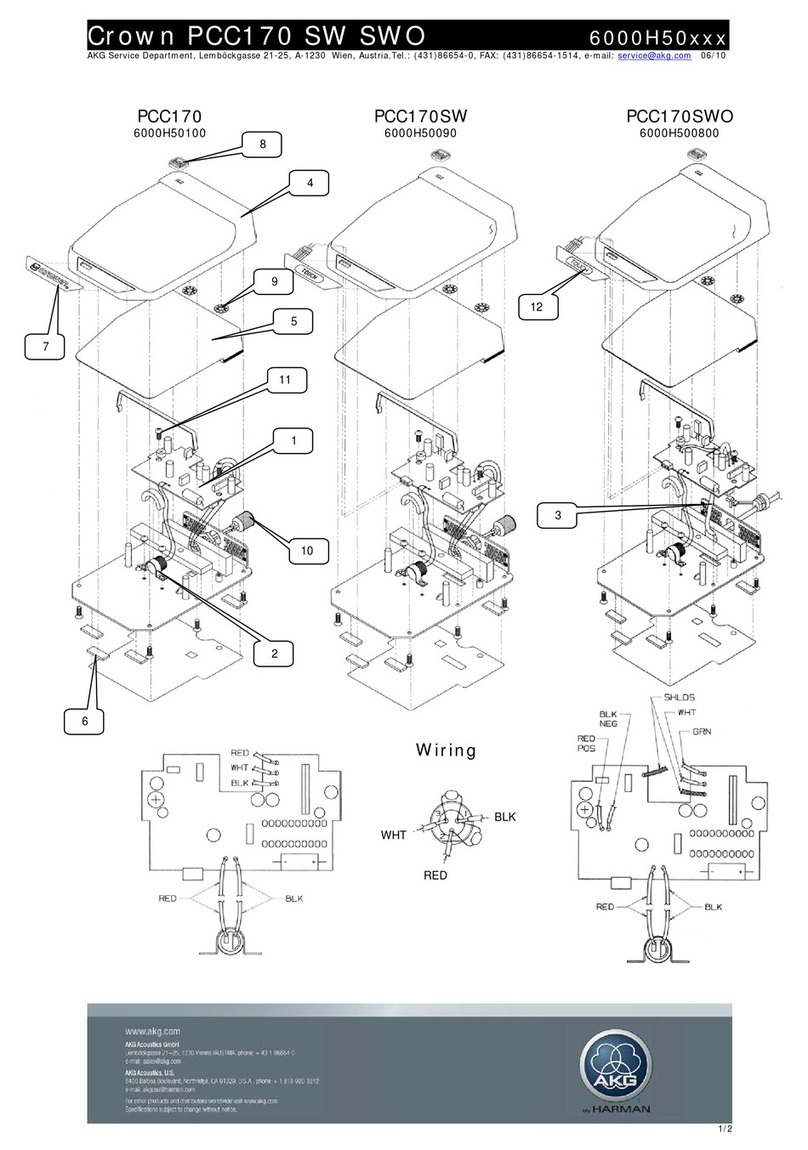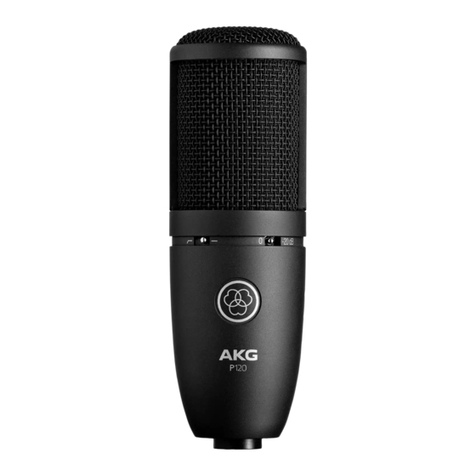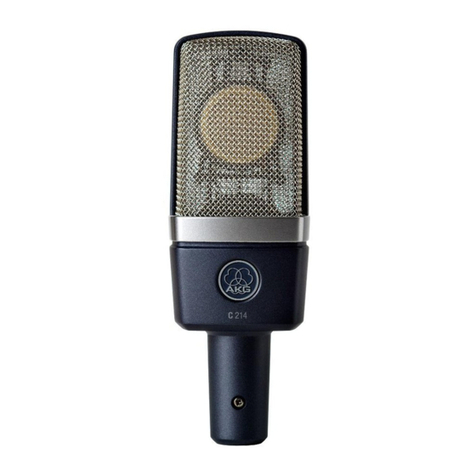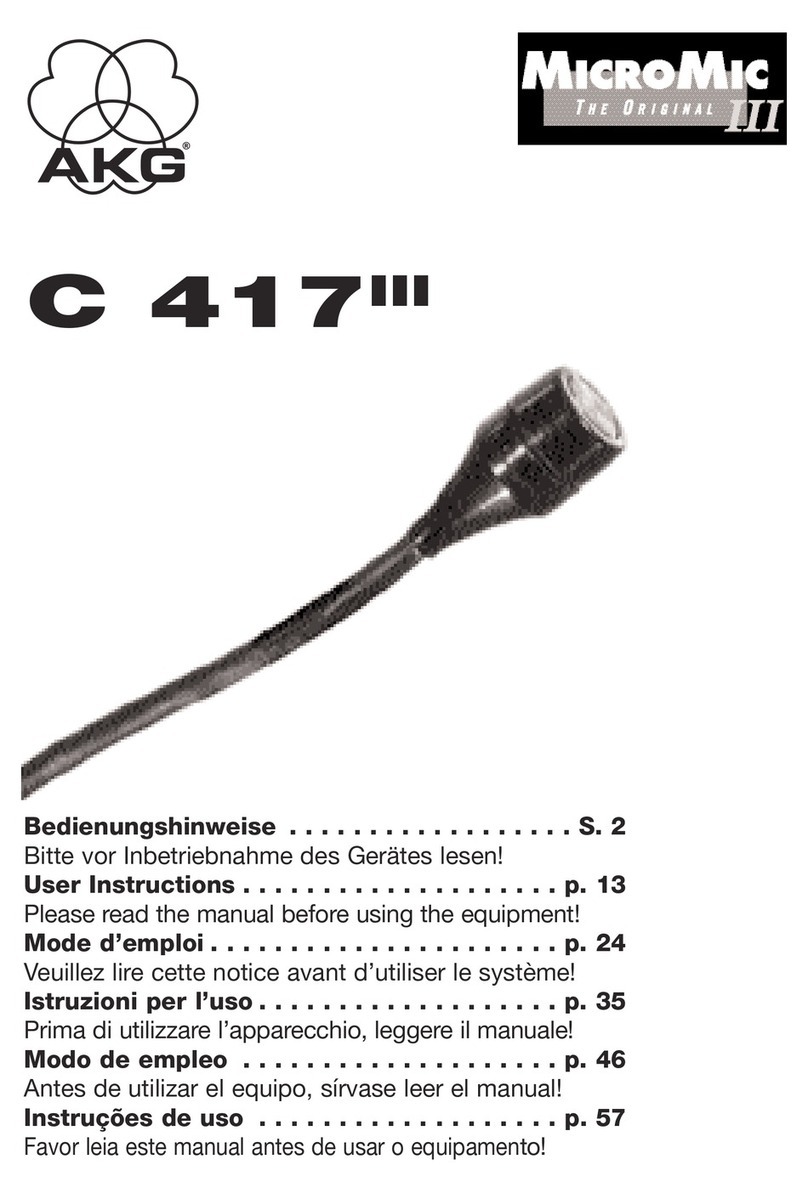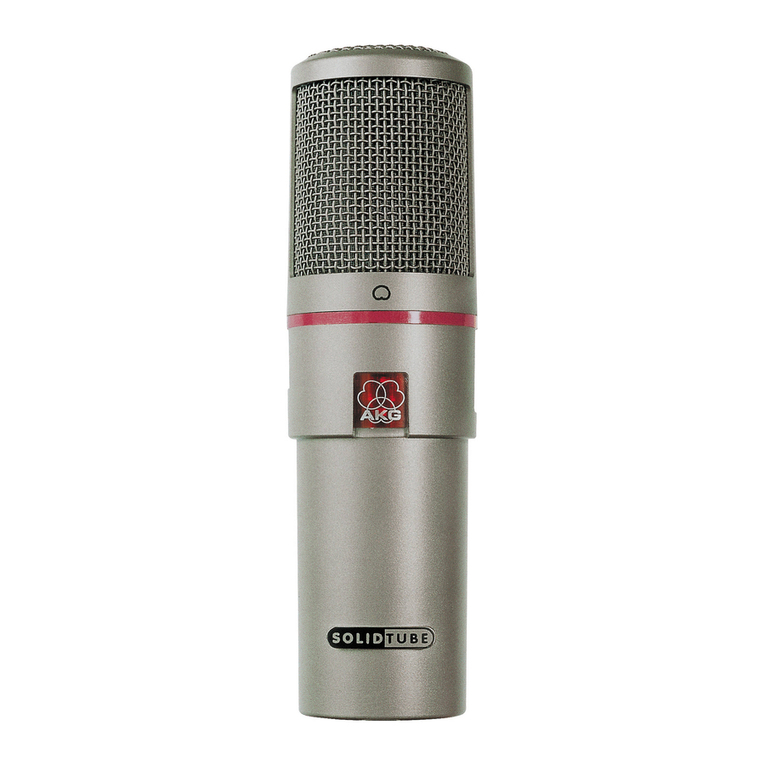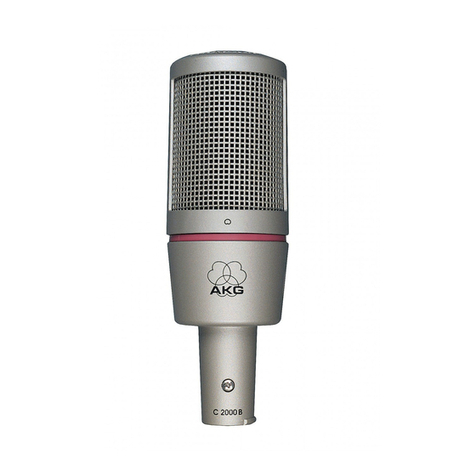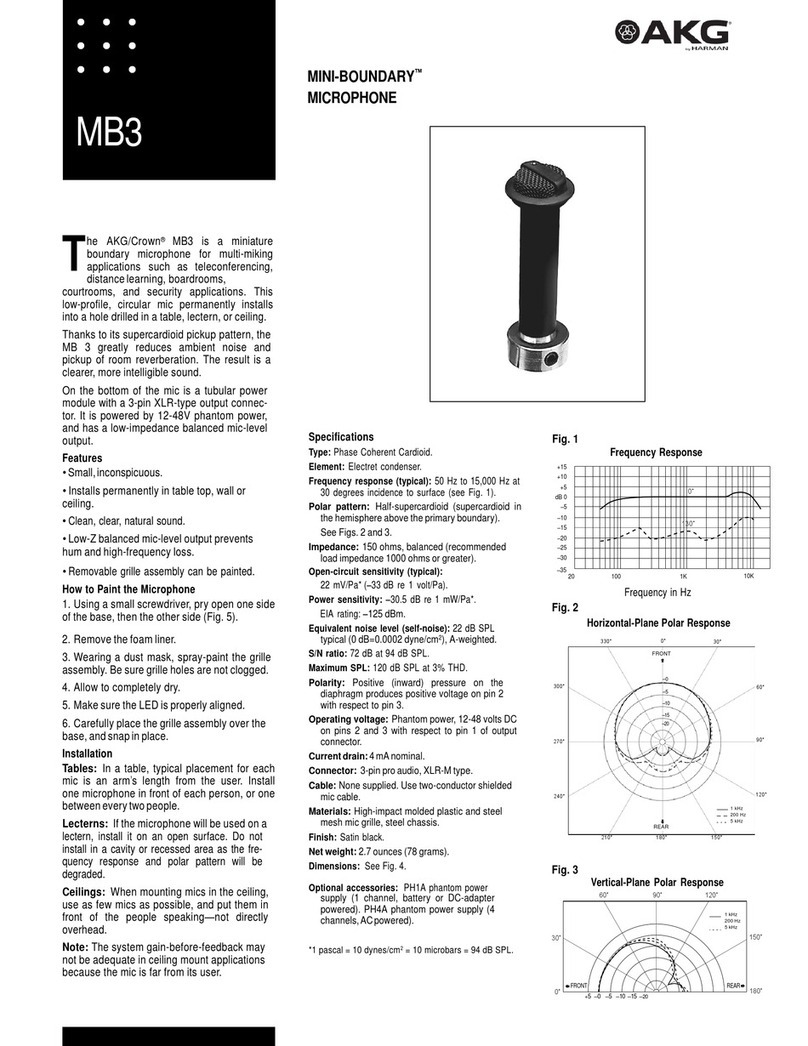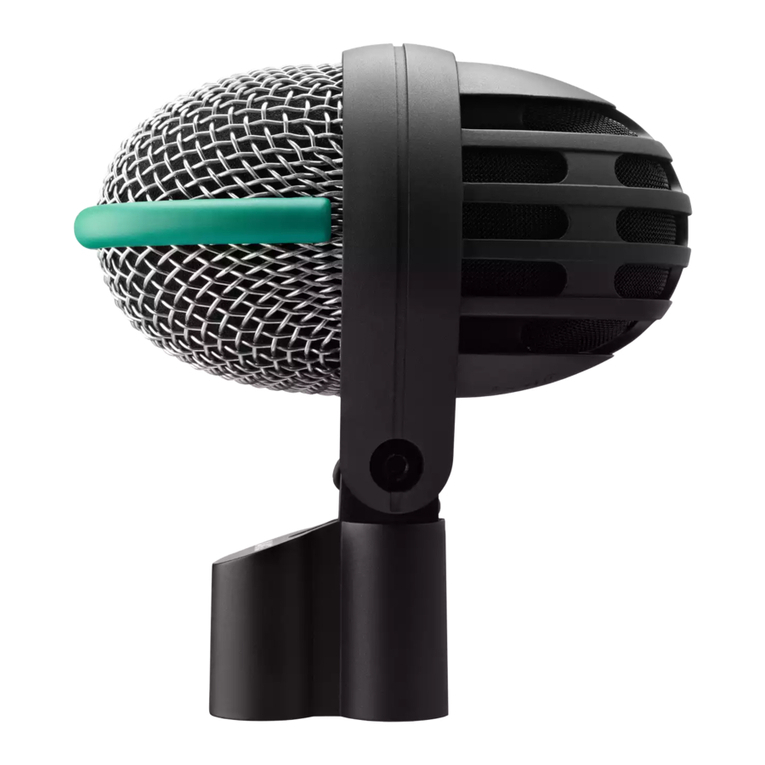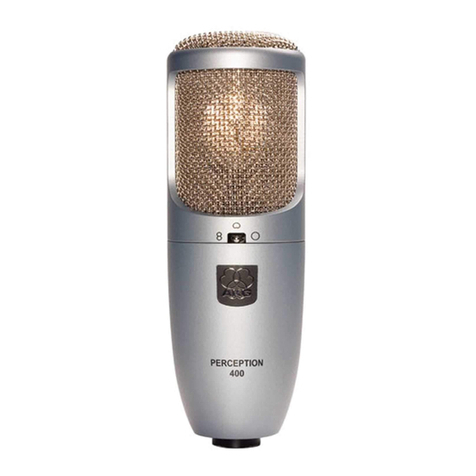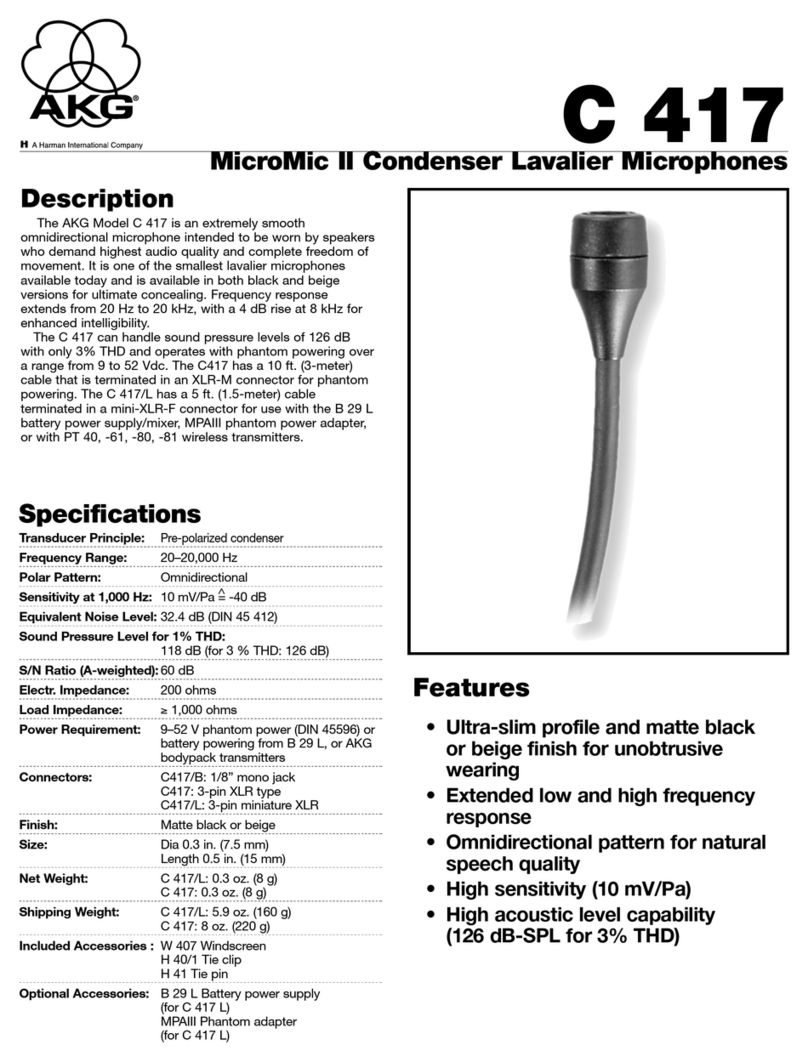How is the tube replaced?
IMPORTANT: Prior to disassembling the microphone, make sure
to disconnect the microphone from the N 12 VR power supply.
Remove the three Philips head screws visible on the underside
(connector side) of the housing and push the lower half of the hous-
ing downwards so far from the upper grid cap part until the vacuum
tube is exposed. This can now be removed by carefully pushing
away the lower part of the elasticated cushioning for the tube and,
simultaneously, carefully levering the tube out of the socket with a
small flat screwdriver.
Inserting a new tube is done in reverse order of the above description.
Finally, please push the lower part of the housing forwards again to
the grid part and, while doing so, take care that the attenuator
switch remains free so that the three Philips head screws can be
screwed in again fully and tightly.
If you should have doubts as to whether you can carry out
the procedure described above without help then consult
with confidence the nearest AKG Service Center.
How is the microphone mounted?
A special elastic shockmount – “H-Solid” is supplied and
should always be used to connect the microphone to floor stands
or booms. The clamp of the shockmount is pushed on to the micro-
phone from below while turning gently until the SOLIDTUBE type
block can be seen again below the clamp. This makes it impossible
for the microphone to slide out of the mounting unintentionally be-
cause this is prevented, on the one side, by the raised type block
and, on the other side, by the grid cap with its larger external diame-
ter. Intentional removal of the microphone from the shockmount is
then only possible by simultaneously turning and pulling the micro-
phone body away from the shockmount.
After fitting the microphone into the shockmount, it can be screwed
on to stands or booms with standard 3/8or 5/8inch threaded
connections. It may also be swivelled against the stand axis in order
to position the microphone optimally for recording.
Only in exceptional cases – for example, on loss or breakage of parts
ofthe elastic shockmount– should themicrophonebe screwed on to
stands or booms directly with the screw adapter on the lower part of
the housing. By doing this, the impact sound absorbing effect of the
shockmount is, naturally, lost. Therefore, replacement of this import-
ant accessory part should be obtained as quickly as possible.
Powering the microphone:
The “N-SOLIDTUBE” power supply unit needed for the powering
is included in the delivery. From the type of connector and the mark-
ings on the rear of the power supply unit housing, it is easy to see
how the microphone should be connected to the power supply. For
this, please use only the 10 m (30 ft.) long multi-core cable
“MK-SOLID” which is likewise included in the delivery. The audio
can likewise be taken balanced from the power supply unit by
means of an XLR-3 connector.
On the operation of the microphone:
The SOLIDTUBE is equipped with a large diaphragm capsule with
cardioid characteristics which can thus handle nearly all tasks oc-
curring in recording studios.
Although the microphone is provided with an built-in pop screen, an
adequate distance to the microphone of at least 20 to 30 cm (ap-
prox. 1 ft.) should be maintained, or the “W-SOLID” wind/pop
screen supplied should be used in order to prevent unwanted
popping noises on the sensitive microphone diaphragm, especially
when using the microphone for singing.
Another way to prevent popping noises is by using the Studio-
Popfilter PF 80 which can be obtained as an option from AKG.
After switching on the microphone power on the power supply unit,
8
